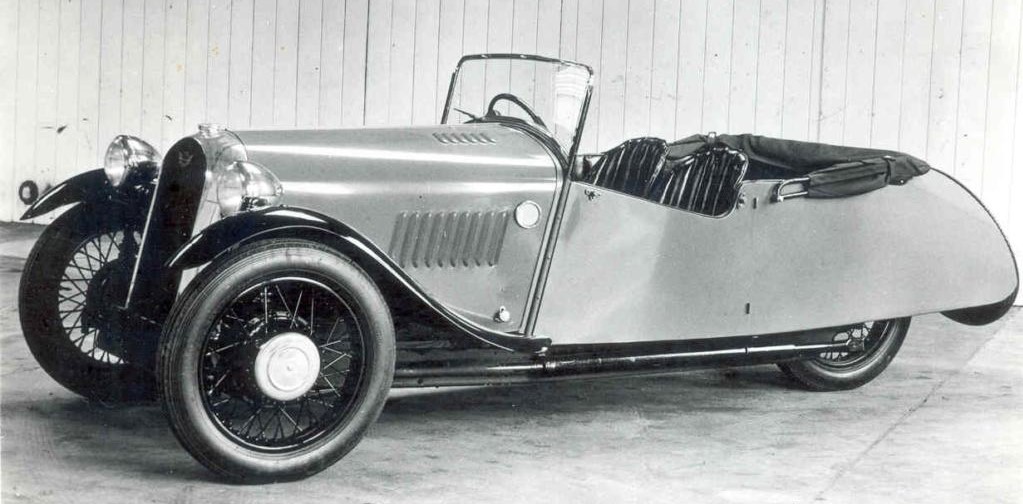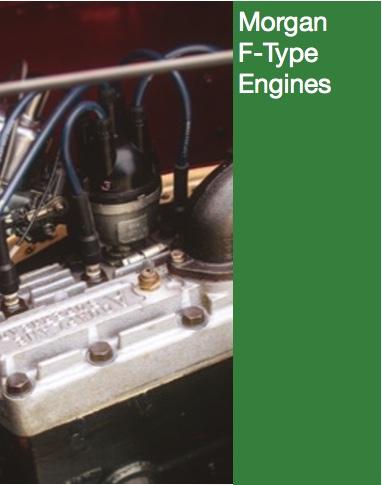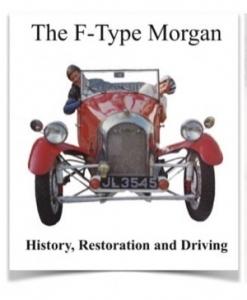THE FORD ENGINED MODELS 1933-1952 (See available handbooks Nev Lear Tony Birks)
After responding to the challenge of providing three speeds and reverse, to further appease the public who wanted a more practical car, a basic bomb-proof side-valve four-cylinder engine was sourced from Ford. This, for obvious reasons (Well, not obvious to a certain Granville Grenfell!), could not be mounted forward of the front cross tubes in the same way as a V twin so the whole chassis was re-designed, abandoning tubular steel in favour of Z section pressings riveted together. The front sliding pillar suspension, gearbox and rear suspension could, however, be re-used.
The F-4
The first F Type was a family model F4 fitted with the 933cc 8hp Ford. This car is still recognised as the most practical and versatile three-wheeler ever to leave the factory. It could bowl along at 60mph on the flat although going uphill was more of a struggle.
The F2

The F4 was joined in 1936 by the more sporting, two seater F2, which have the optional 10hp 1172cc engine, providing a useful boost in performance.
In 1938 this was replaced by the F Super (Sports). The body line was now lowered 2” and the occupants were similarly lowered – no, not that – the seats were lowered! The general appearance was made far more stylish with swept back wings, a lowered radiator, extra bonnet louvres and a fold-flat windscreen. The un-burstable 10hp motor upped the cruising speed to 65mph with more available when required. The longer wheelbase and the centre of gravity shifted backwards made them feel different to drive but the handling was well up to Morgan standards. Sadly, production ceased in 1952. The world had moved on and the side-valve Ford engines represented much better value to the family motorist when housed in the Prefect or Popular. Not half such fun to drive though!
Adrian Murray-Leslie
The F Super


































